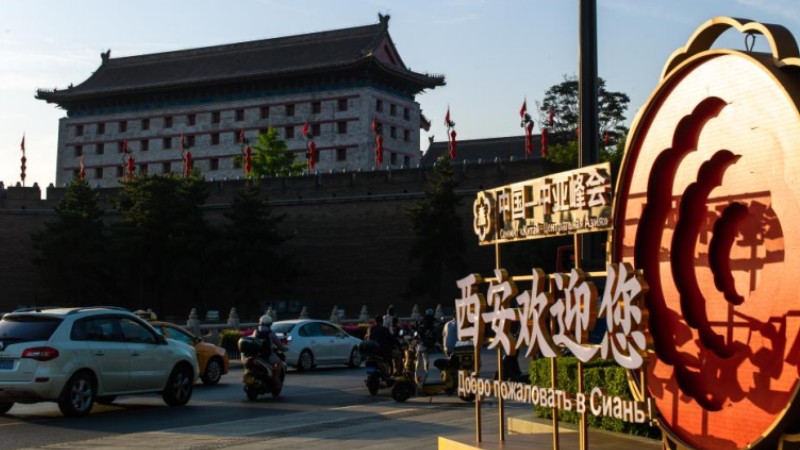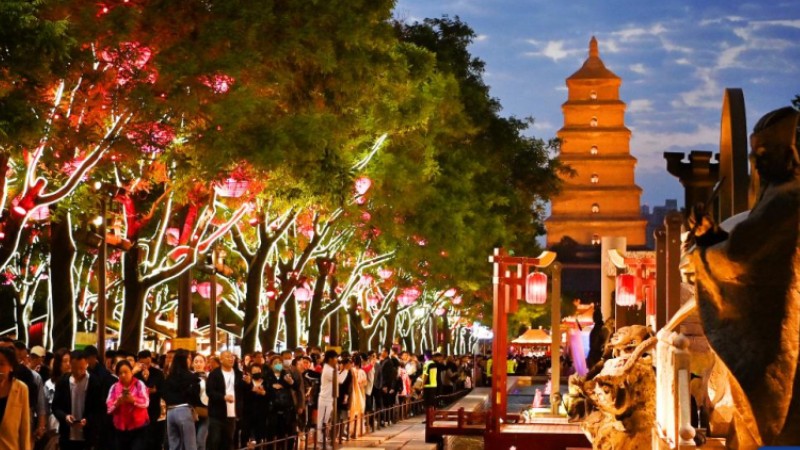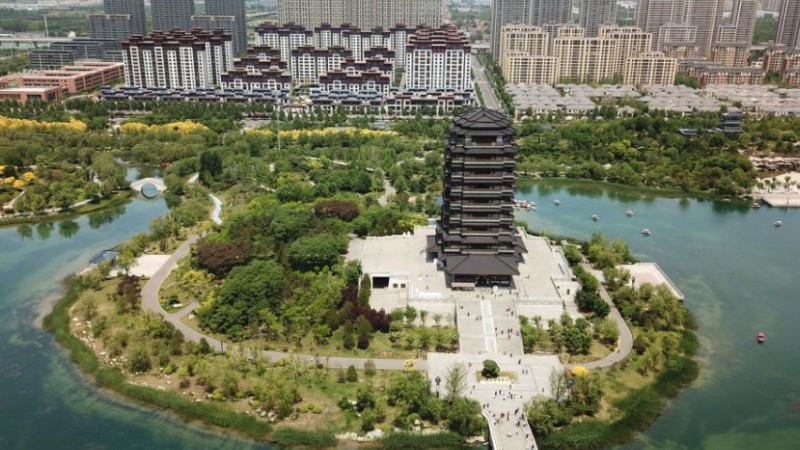Museums revive revolutionary history in NW China
YINCHUAN, May 17 (Xinhua) -- On a Sunday afternoon earlier this month, some 100 high school students walked on a trail in the Liupanshan Mountain in northwest China's Ningxia Hui Autonomous Region.
Eighteen significant historical scenarios of the epic Long March were re-enacted on the 2.5-km-long "Red Army Path," where visitors can retrace the history of the Long March and better understand the Long March spirit.
The Long March was a military maneuver carried out by the Chinese Workers' and Peasants' Red Army from 1934 to 1936. During this period, the army left their bases and marched through raging rivers, frigid mountains, and arid grasslands to break the siege of Kuomintang forces and continued to fight Japanese aggressors.
The students were trying to have a real-life experience of the Red Army soldiers when passing through the mountain in southern Ningxia. They finally reached the top of a hill where a large museum complex built from 2005 to 2014 stood in memory of the Long March.
Ningxia was a significant battlefield and milieu of revolutionary activities of the Red Army and thus is rich in historical records of its endeavors nearly nine decades ago.
More than 80 years ago, American journalist Edgar Snow penned "Red Star Over China," which gave a rare and detailed account of the Chinese Revolution in the 1930s.
Snow had numerous interviews with Red Army leaders, soldiers, and local people in Yuwangpu, now in Tongxin County of Wuzhong City in central Ningxia.
A modern museum at a central plaza of Tongxin County seat is reviving the period of history with photos, old objects, replicas, and multimedia documents. It receives hundreds of visitors daily.
Visitors there can see original objects or replicas of military banners, books, leaflets, weapons, uniforms, and shoes used by the Red Army. Scenes of fierce battles show in multimedia videos.
"The revolutionary history of Yuwangpu is an important treasure for local people, who set up the first revolutionary government in Ningxia by ethnic Hui people with the support of the Red Army," said Ma Yuhai, a staff member working at the museum.
After the Red Army arrived in southern Ningxia in 1935, it began a series of military actions and revolutionary activities, re-animated by many museums in Ningxia.
An old courtyard house in Shanjiaji of Xiji County, which once hosted Chairman Mao Zedong in 1935, has become a museum with hundreds of thousands of visitors each year.
A "Kang," or heatable bed, common in northern China and once used by Mao, is on display in the house.
"Locals in Shanjiaji then welcomed the Red Army with food, tea, and other necessities, but the soldiers, abiding by strict discipline, paid all with money and refused to take anything for free," said Ma Xiao with the local chronicles office in Xiji County.
Photos
Related Stories
Copyright © 2023 People's Daily Online. All Rights Reserved.









